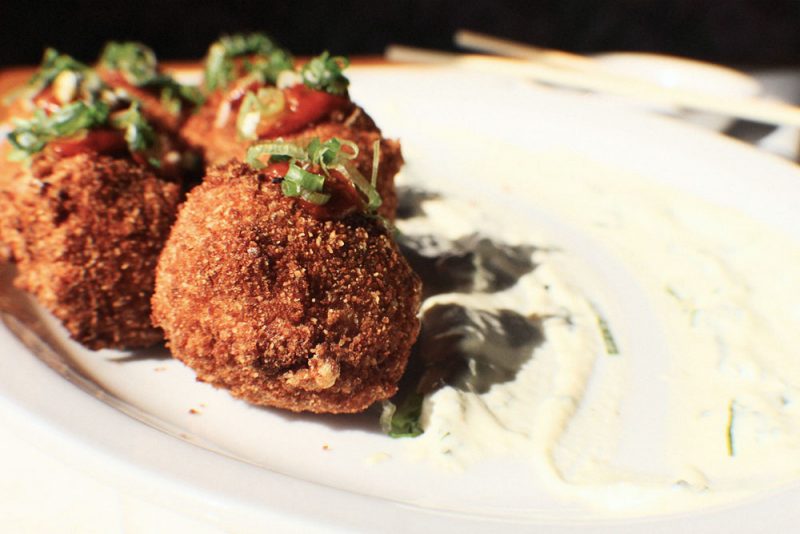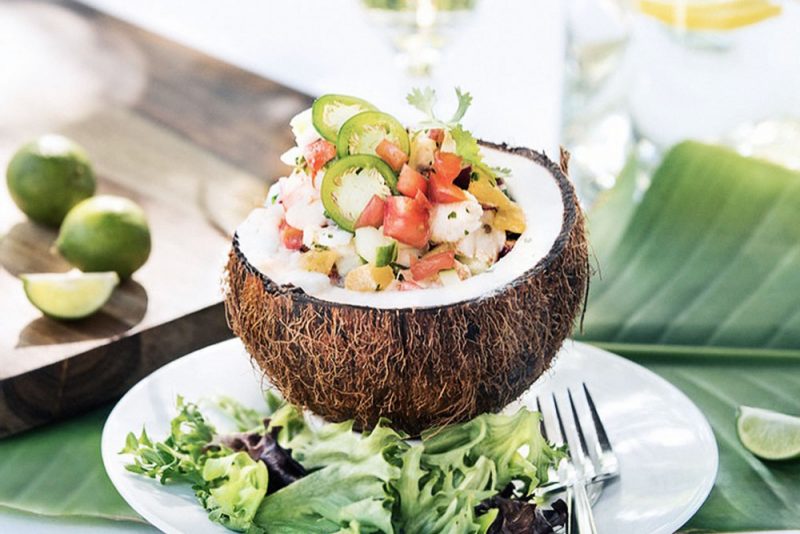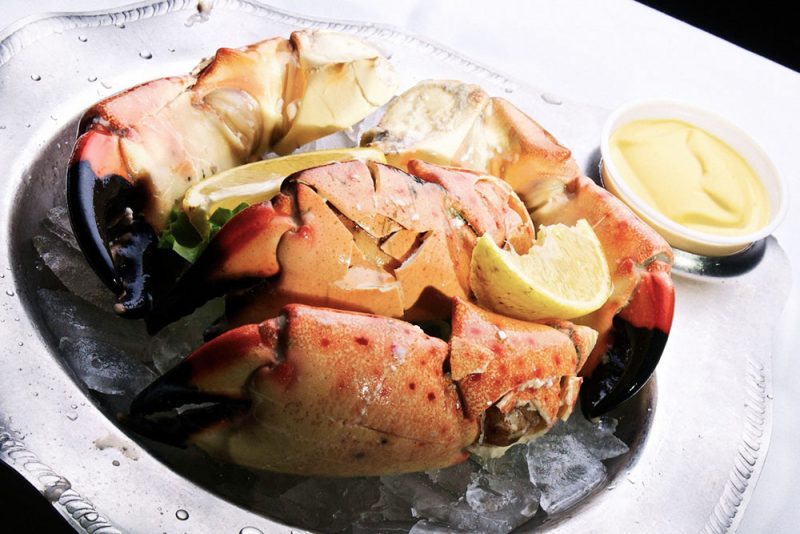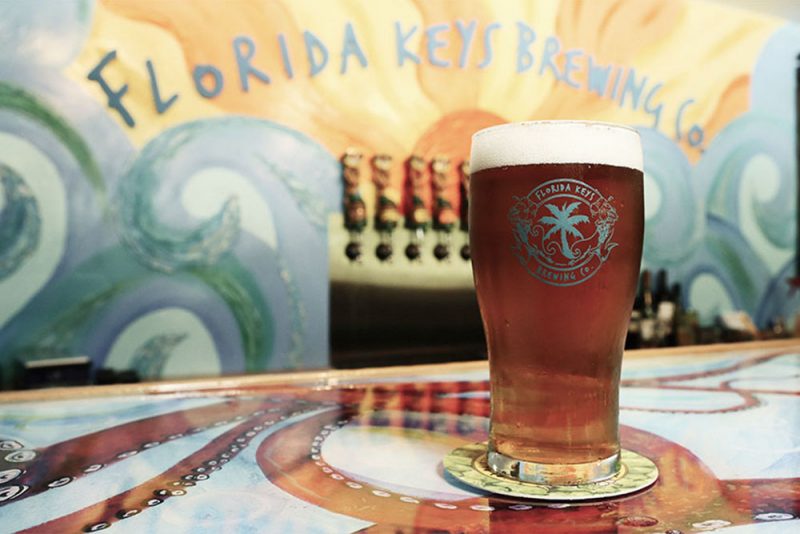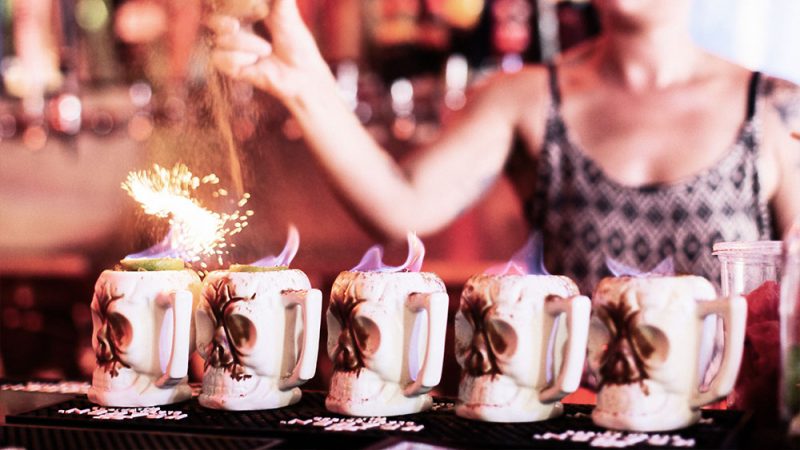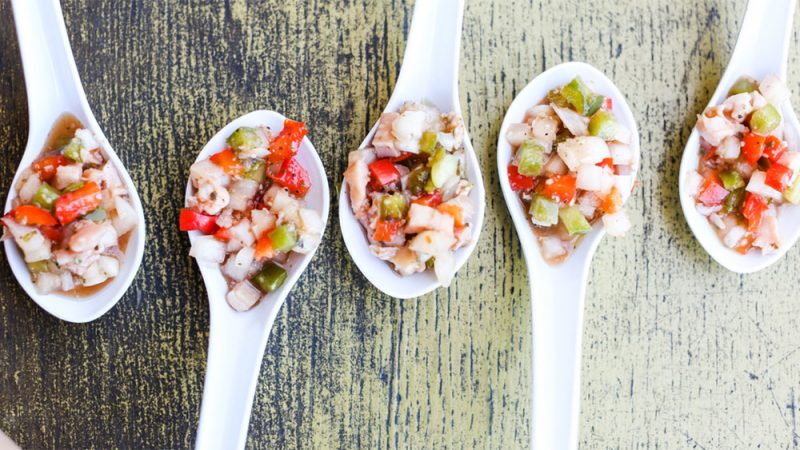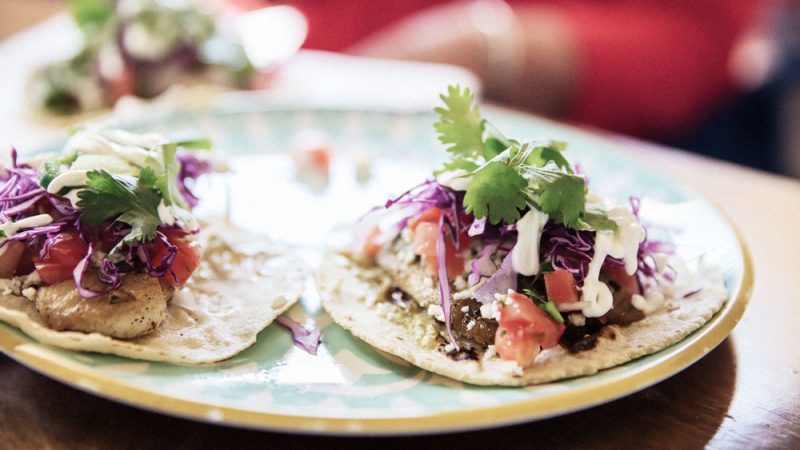From my gull’s eye view — close to 100 metres above terra firma (or perhaps terra-not-so-firma) — the Florida Strait is a tapestry of emerald, topaz and jade. There was a bit of a brisk start to this January day (brisk enough for the locals to complain … and wear long pants). But the skies are clear, the air is clean and I’m actually attached to a parachute. So, what could go wrong?
As it turns out, nothing. My chute is attached to a line that’s attached to a boat (the “Aw Chute”) piloted by a duo from Sundance Watersports. Surrounding me as we fly shorewards are the five geographical boundaries that define the Florida Keys. In front of me, Islamorada. To the east, Key Largo. To the west, Marathon, Big Pine Key, the Lower Keys and, eventually, Key West. Below, the great blue sea. Above, the wild blue yonder.
I’ve launched this aerial adventure after a hearty breakfast at the Hungry Tarpon Restaurant and Bar at the famous Robbie’s Marina. The eatery takes its name from the fact that there actually are hungry tarpon patrolling the waters under the marina dock. You can buy a bucket of baitfish to feed these aggressive (and large) fish, just beware the equally large (and possibly even more aggressive) pelicans that do their best to get between your baitfish-filled hand and the tarpon’s mouth. I’m not aware of anyone actually losing a digit to a pelican, but, like, it could happen, right?
Anyway, as much fun as flying around is, my visit to the Florida Keys is about pursuits much more terrestrial — namely, discovering the plethora of food and drink the area has to offer.
Now, when one thinks of the Florida Keys — the approximately 360-square-kilometre archipelago of sand and coral that juts from the tip of the panhandle to within 140 kilometres of Cuba — gastronomy is probably not the first thing that comes to mind (Key lime pie aside). Ernest Hemingway house, Tennessee Williams house and the “Winter White House” all in Key West; the Seven Mile Bridge that connects the Middle Keys to the Lower Keys; the remnants of the Overseas Railway; coconut palms, Key deer, American crocodiles and Florida mangroves, sure. But gustatory pleasures? Maybe not so much. So, it was a pleasant surprise on my expedition down the length of the Keys (a thoroughly enjoyable trip that I encourage you to do yourself) to find so much great grub, as well as craft beers and distillates.
Hitting Highway 1 in Miami and heading towards Key Largo, I am feeling a tad peckish. Considering there are places in the Keys where, if you stood smack-dab in the middle of Highway 1 (not advised, BTW) and stretched out your arms, you could almost feel ocean spray on each hand, meals of fish and seafood are pretty much obligatory.
I veer across the highway as a bright yellow, red and white sign catches my eye: The Fish House.
A multi-award-wining restaurant, market and gift shop, the place has been a Key Largo institution since 1982. It’s been featured in pretty much every food column, magazine and TV dining show about Florida. Though (obviously) specializing in fresh-caught, local finned and shelled things, it has a menu to suit all tastes. I opt for yellowtail snapper served Matecumbe style, which means the fish is baked and accompanied by a vibrant sauce of tomato, shallot, basil, capers, onion, olive oil and lemon juice. For the curious (or for those thinking that the dish sounds a bit too Mediterranean to be, well, American), Matecumbe is a Key Largo neighbourhood with a strong Spanish tradition — a tradition clearly reflected in the sauce that graces the fish. Savouring the dish, half my palate was on the Spanish coast, the other half in the American South.
Before leaving Key Largo, I pop into Sundowners, one in a series of restaurants owned and operated by local celebrity chef and author Bobby Stoky, which stretch from Miami to Islamorada. As luck would have it, Stoky is on site. He treats me to a demonstration of how to prepare a Keys favourite: crab cakes. A demonstration of how to enjoy them is unnecessary as I scarf a few of the fresh, tasty morsels back. Nothing like enjoying a bite of lunch after lunch.
The flight, the drive, the food and the warm sun has made me decidedly relaxed. Relaxed enough to conclude that more time behind the wheel would not be a good (or particularly smart) thing. Instead, I’m thinking: beach, palm trees, ocean, maybe a nap, maybe a cocktail, maybe all of the above…
“Toronto 1297 [miles],” reads the sign nailed to a tree trunk jutting out from the sand at the Islander Resort. As the sun glints off the azure Atlantic and palm trees rustle in the warm breeze, I feel no homesickness. At all. “Paris 4636 [miles],” proclaims another sign. Paris, shmaris. Don’t really feel like going there, either. Nope. Right now, I have the three “esses” of The Life Relaxed: sand, surf, sun.
The Islander Resort — a 115-room complex laid out over about 10 hectares of pristine beachfront — turns out to be a great midway stopover on my journey to Key West. Fully transformed of late to become a Green Hotels Association member. It sports all conceivable amenities, including modern but cozy rooms, restaurants, a conference centre, two pools, a hot tub and a plethora of available activities. And sand. Lots of sand…
Reclining beachside, I’m reading about the Keys. Do you know what’s killing the coral? Sun screen! WTF? Sure, it helps us stay bleached, but it apparently also helps us bleach out the coral. Not good. Know what else is a big problemo? Lionfish. They came in from Indochina and are totally screwing with the Keys marine ecosystem. Upside? You can eat ’em. Downside? You could get the jab of your life. I’ll get to that, but right now, I need some beer and spirits. And hogfish. Luckily, all are within walking distance.
While there are a number of breweries and distilleries (and even a few wineries) to be found in the Keys, a couple of the best are right here in Islamorada.
I tour and taste at the Islamorada Beer Company (opened in 2014), and the newer (2017) Islamorada Distilling. Head Brewer Stephanie Harper is a Delaware native who packed up and moved to the Keys to become a dive instructor. Seems that wetting the whistle turned out to be a better proposition than wetting the body, so she ended up in the suds rather than the sea.
Stylistically speaking, the company’s beers shoot for a lighter profile. It’s a style that is in keeping with warm climates and active lifestyles. Its year-round selection ranges from the citrusy and mildly spicy Sandbar Sunday American Wheat Ale to the fuller, hoppier Channel Marker IPA.
Snugged in next to the brewery, Islamorada Distilling’s compact operation crafts vodka, a couple gins and a portfolio of rums. Though all the spirits I taste are of undeniably high quality, my preference leans toward the Reserve Single Barrel Rum, which shows richness and depth while retaining an elegant character.
Before heading over to Chef Michael’s for dinner, I can’t help but make a quick detour into Florida Keys Brewing Company, the Upper Keys first craft brewery.
A fun, funky place, it actually has a decided stream of Canadian blood running through it. Owner/Head Brewer Craig McBay originally hailed from an area not too far from my condo in Toronto’s west end before succumbing to the lure of the Keys. McBay isn’t there the afternoon I drop in, but “Executive Hot Mess” Rio Campbell is. Together, we sample a few beers … 17 in all if my notes serve me well (memory obviously doesn’t).
Stylistically, FKBC’s range covers the gamut from the honey- and hibiscus-laced Iguana Bait to the grapefruit-infused Grapefruit To Be Alive and onwards though a dizzying selection of reds, ambers, browns, porters, wheats, sours, stouts, small batches and seasonals. I sample much. Campbell may self-title herself a “hot mess,” but I’m in danger of becoming just a mess. I need solid food. And I find some really tasty samples at Chef Michael’s.
One of the few restaurants in the Florida Keys operated by its own chef, the motto on the establishment’s sign reads: “Peace, Love & Hogfish.” The hogfish is delightful. I love the flaky — almost silky — and tender white meat that feels almost ethereal on the palate.
The next day, I head through Marathon on my way to Key West. Don’t leave Marathon without hitting Castaway Waterfront Restaurant. Built in 1951, and purchased by John and Arlene Mirabella in 1999, it’s a seafood lovers’ nirvana. While you can have menu items cooked any way you please, I opt for raw, as I’ve always thought this was the best way to really experience the ocean-fresh flavour of ocean-fresh fish. While some of the usual suspects (snapper, salmon, tuna and the like) wind up in front of me, what really catches (ahem) my eye is the lionfish — that previously mentioned pesky non-indigenous invader from the east.
They may look pretty (or totally bizarre, depending on how you see things), but the fish’s spines contain a particularly nasty venom that, in some cases, can be fatal to humans. Unless, of course, the human strikes first. Behold: lionfish sashimi. Fairly mild, slightly buttery and with a taste not unlike a cross between lobster and shrimp. Definitely a new experience for me.
On the road again, heading down Highway 1 through Marathon, I detour once more (don’t panic, we will eventually get to Key West) for a quick visit to Keez Beez. The southernmost apiary in the United States is a small but growing company that tends to over 500 hives and specializes in some pretty exotic varietal honeys, including Red Mangrove, Sea Grape, Mango Blossom and Citrus. I’m guided through a tasting and explanation of the importance of sustainable practices and Keys conservation efforts by the incredibly knowledgeable, and totally engaging, Matthew Sexton. Though his “day job” is overseeing the Otherside Adventure Park and Otherside Boardsports, he’s as much a farmer as a wave shredder. The Food Network could do well giving him his own show.
I am always impressed by, and envious of, people who really seem to have their sh…, um, “stuff” together. I left Sexton’s company feeling very impressed. It was now Key West or bust.
“Write drunk. Edit sober,” suggests (commands?) the message on the T-shirt hanging in the gift shop of the Perry Hotel Key West at Stock Island Marina. Hmmm, thinks I, does this explain why my writing is often pretty good, but my editing is somewhat sloppy?
The Perry (as I’ve edited it to be) is a very cool hotel indeed. I’m given a full tour of the sleek industrial/nautical wood and metal boutique by Sales and Marketing Manager Jenny Lorenz before being shown to my modern, fully decked-out room overlooking the swimming pool and 220-slip marina — the largest deep-water berth in the Florida Keys.
Of course, swimming in those deep waters — alongside the hogfish and lionfish — are other members of the underwater kingdom to marvel at and eat. Bet you’ll never guess what I chow down on at The Stoned Crab restaurant!
“Write drunk, edit sober,” suggests the message on the t-shirt hanging in the Perry Hotel Key West gift shop.
Stone crabs are interesting little beasts. Not only are their claws meaty, sweet and addictive, they are also perpetual … more or less. If you remove a claw from a stone crab and send it (the crab, not the claw) back to its watery home (likely making it equal parts pissed off and grateful), it will regrow the missing part. Which is exactly what the crab fishers do. Remove a claw and flip the crab back into the drink. It returns to the trap that it was caught in to channel surf Netflix (or however crabs pass the time) while the amputated appendage regenerates. That the crab returns to where it was caught suggests that it is either really stupid or that giving up a claw now and then in exchange for food and shelter is an acceptable — if somewhat lopsided — deal. In any case, the crab guys can keep the claw supply steady by alternating between one “arm” and the other, harvesting the mature claw while the other fully regenerates. Probably not a PETA-sanctioned action, but it seems to work for both parties.
As the molten yellow orb shimmers on the horizon off Mallory Square, and the nightly street carnival kicks into high gear, I review my notes on my time in Key West. And I can’t believe I feel hungry again as I relive yesterday’s adventures.
The Southernmost Food & Cultural Tour with Key West Food Tours introduced me to a taste of authentic Cuban cuisine at the renowned El Siboney. (“You’re missing out if you don’t try Cuban food,” my guide admonished as I shovelled melt-in-your-mouth puerco asado into mine.) I filled up on ultra-fresh, sustainably caught red grouper tacos at Bad Boy Burrito; rum cocktails at the aptly-named Rum Bar; and heavenly indulgences at the funky and famous Ricky’s Blue Heaven while chickens scampered about freely (they are a protected animal in Key West). I even joined a master class in conch fritters at Mango’s (“They should seem slightly underdone and have a chewy texture,” informed my guide … check); and finally, I took a bite (actually several) out of a Key lime pie at a pie-making demo provided by Kermit (resplendent in vibrant tip-to-toe green) of Kermit’s Key West Key Lime Shoppe.
Those who live on “the rock” (the local nickname of the Florida Keys) often never leave. Some, like Campbell and McBay, come down from other parts and never leave. If this story hasn’t given you at least a taste of what life on the rock has to offer, then, well, maybe I need to drink more.

